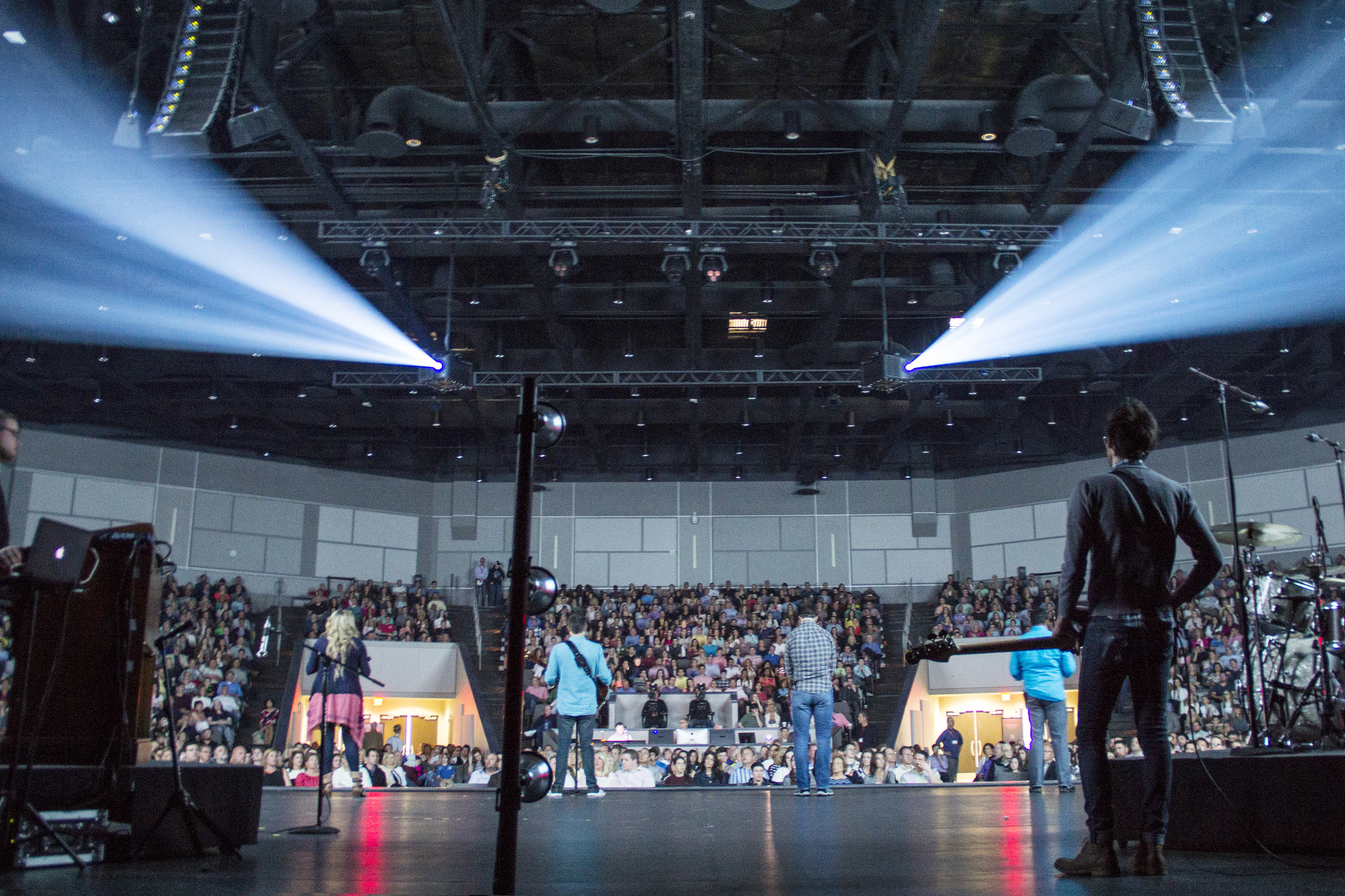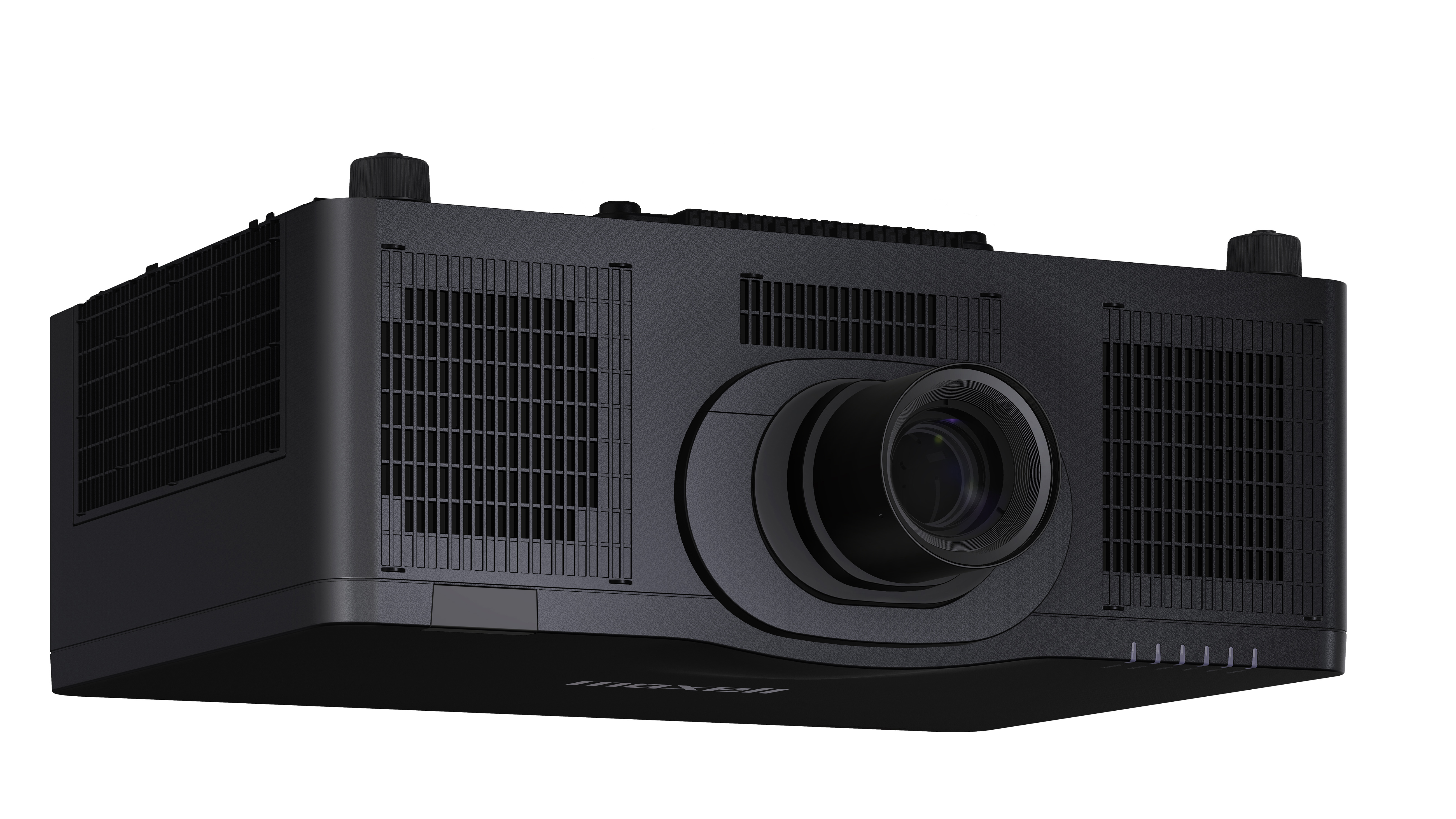Sharing the Holy Light
Brighter Projection Solutions, Minimal Maintenance for Houses of Worship

Houses of Worship (HOWs) have been investing heavily in AV technology in recent years, particularly video projectors and dynamic screens, which engage parishioners in large venues, and streaming services for remote congregation members.
Unfortunately, most HOWs are not designed to be ideal AV presentation spaces. In fact, many worship facilities—particularly historic buildings—have architecture that presents inherent challenges for large-screen projection. Fortunately, recent trends in projector design are addressing the unique problems encountered by HOWs, ensuring that everyone can easily see what’s on the screen.
Scroll through the gallery below to see the latest projection solutions for houses of worship.

NEC’s NP-P605UL Entry Installation Series Projector
NEC’s NP-P605UL Entry Installation Series, LCD, laser projector combines advanced features at a budget-conscious price. With 6,000 lumens, WUXGA resolution, and improved color fidelity, the P Series delivers impressive images in demanding applications.

Epson Pro L1755UNL WUXGA 3LCD Laser Projector
The Epson Pro L1755UNL WUXGA 3LCD laser projector combines a laser light source, inorganic components, and 3LCD technology for powerful, uncompromising images. This premium large-venue projector also features native WUXGA performance with Epson 4K Enhancement Technology.

Maxell MP-WU8801 3LCD Laser Projector
Maxell’s MP-WU8801 3LCD laser projector features a 2,500,000:1 contrast ratio, 20,000 hours of lamp life and a five-year warranty.
Spaces of Wonder
Historically, HOWs have employed high or vaulted ceilings to deliver grand allure, inspiring congregations with a sense of awe, and to make worship spaces look and feel bigger than they actually are. The vault seems to reach toward heaven in an architectural bid to inspire contemplation and reflection. Worship spaces also typically employ large windows, with the goal of bringing in natural light and inspiring reverence in parishioners sitting inside.
This historical precedent virtually guarantees that even the most modern house of worship will be bathed in bright natural light, from the floor to the ceiling high above, though neither the light nor the vault does anything useful for large-screen video projection. The natural light can wash out what’s being projected on the screen, while the HOW’s excessively vertical architecture can make it difficult to access projectors for maintenance.
[Free Download: The Integration Guide to Projectors and Screens]
“Traditionally, churches have needed really bright projectors to overcome the ambient light and other environmental considerations,” said Ryan Pitterle, NEC Display Solutions’ product manager for projectors. As well, “it’s always been a case where these projectors may be mounted quite high in the room if you’ve got a vaulted ceiling.”
A daily selection of the top stories for AV integrators, resellers and consultants. Sign up below.
Mounting conventional video projectors up high makes them very difficult to maintain. “If you are in a classroom or conference room, you can reach a ceiling-mounted projector with a six-foot ladder,” Pitterle said. “A lot of times that’s not the case in a church. [Sometimes] doing projector maintenance requires using a lift or scaffolding, or some other elaborate solution.”
Laser Projectors Solving Problems for HOWs
For decades, HOWs have relied on high-output video projectors to deliver viewable images in their naturally lit spaces, and struggled to keep these projectors maintained on an ongoing basis.
These high-output video projectors relied on traditional lightbulbs for illumination; the projector used fans and filters to cool the bulb and keep dust at bay. Unfortunately, this design features a lot of moving parts that require continual upkeep. When bulbs burn out and need to be replaced, HOW video projectors can be a headache for HOW maintenance crews.
The adoption of laser video projectors, like NEC’s 6,000-lumen NP-P605UL LCD projector, is relieving this pain point. “Laser is a solid-state technology that does not require maintenance,” said Pitterle. “These laser light sources last 20,000 hours or more, depending on the usage.”
[Free Download: The Integration Guide to Houses of Worship 2019]
Not only are laser projectors bulb-free, but they can pump out light levels sufficient to offset any natural/ambient illumination washing out the screen. “We are now offering up to 6,000 lumens in our standard category products,” Pitterle said. “We have projectors going from 8,000 lumens up to 40,000 lumens in our installation series product line.”
In addition to removing the bulb that must periodically be replaced, laser projectors eliminate the need for filters that occasionally need to be cleaned. A projector’s laser light source is encased in a “sealed optics” unit, which prevents dust from entering and clogging up the works. The use of laser technology has allowed NEC and other projector manufacturers to reduce the size of cooling fans within these units, which leads to low operating noise—and less heat.
The payoff for HOWs has been notable. No longer do HOW crews have to regularly use lifts or erect scaffolds to replace bulbs and clean filters. Meanwhile, the greater light output allows laser projectors to deliver bright imagery that can be seen throughout the hall, even with sunlight streaming in through stained glass windows.
“The development trends driving video projectors has been revolutionary for HOWs,” said Pitterle. “Improving performance while eliminating the challenges associated with maintaining those products has been a huge step forward for our HOW clients.”
Robust Performance with No Shadows
According to Ramzi Shakra, product manager, large venue projectors, Epson America, “We’ve noticed the house of worship market embracing new display technology to increase engagement among congregations through visually compelling services and live music events. Excessively high cost with minimal installation flexibility tends to be associated with large LED walls; because of this, we are seeing more places of worship turning to projection technology for large display needs.”
Shakra said that Epson offers a range of affordable, reliable projector solutions for churches, including the 15,000-lumen Pro L1755UNL laser projector with ELPLX02 ultra short-throw lens, a package designed to deliver clear, bright, and vivid messages of faith or powerful live performances without picking up shadows of the band or presenter.
On the Go
Overflow rooms and portable churches are other key trends with direct links to projection solutions. Lighter and more plug-and-play laser models help HOWs set up, hold service, pack up, and move on to a different location.
As reported in AV Technology magazine last year, the Spokane, WA-based Sun City Church currently holds Sunday services in the cafeteria of Spokane’s University High School. “Sun City is a ‘mobile church,’” explained Pastor Danny Schulz. “We carry everything we need—including chairs, a portable elevated stage, and our AV system—in two U-Haul trucks.”
[Turning Heads with Projection Mapping]
Every Sunday before service, the pastors and their congregation set the church up. After the service, they tear it down, like a rock band moving from town to town. It’s a daunting task, but Pastor Schulz doesn’t mind: “Doing the setup and teardown every week helps build our community through everyone working together,” he said.
Transformation & Celebration
Projection mapping is another vital element for many HOWs as they seek to engage new generations of parishioners and transform the stage to celebrate specific events or holidays.
“We see more and more churches incorporating environmental projection into their weekly services,” said Ray Soltys, director of sales, Maxell Corp. of America. “Edge blending and warping makes it really easy for churches to project across an entire backdrop instead of just on left and right mounted screens. Now house of worship facilities are taking advantage of the extra space by creating environmental projections to tie together a series they’re teaching or to enhance their holiday programs,” he said.
Margot Douaihy, Ph.D., is a lecturer at Franklin Pierce University.

